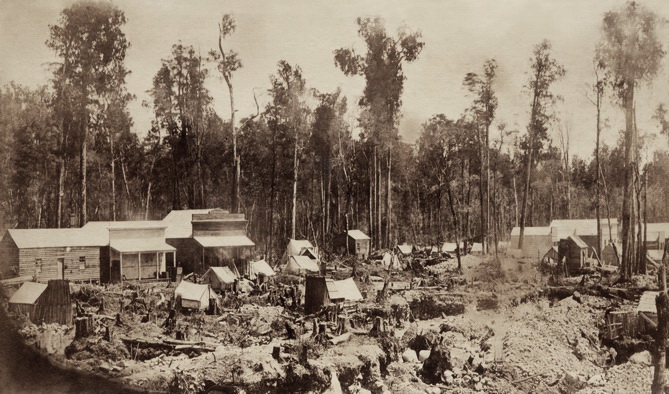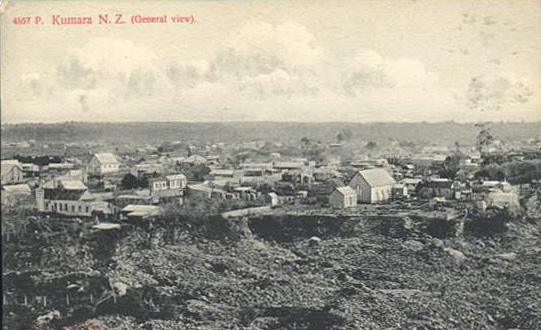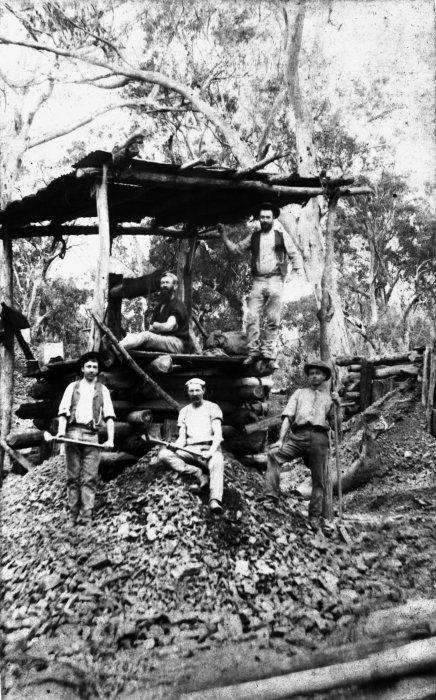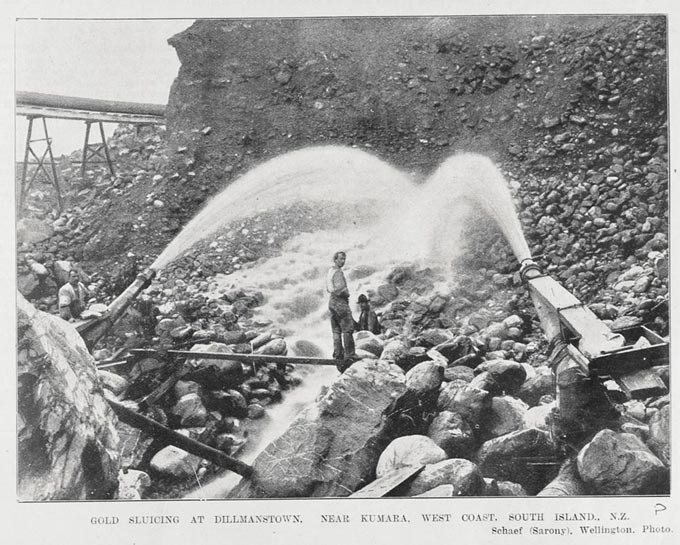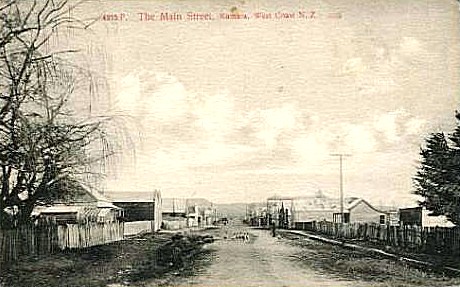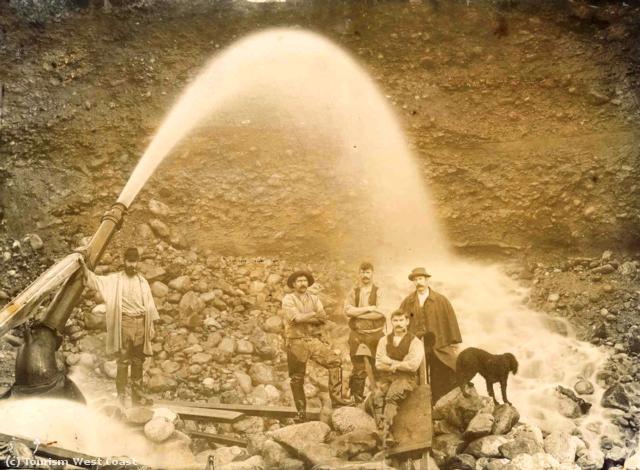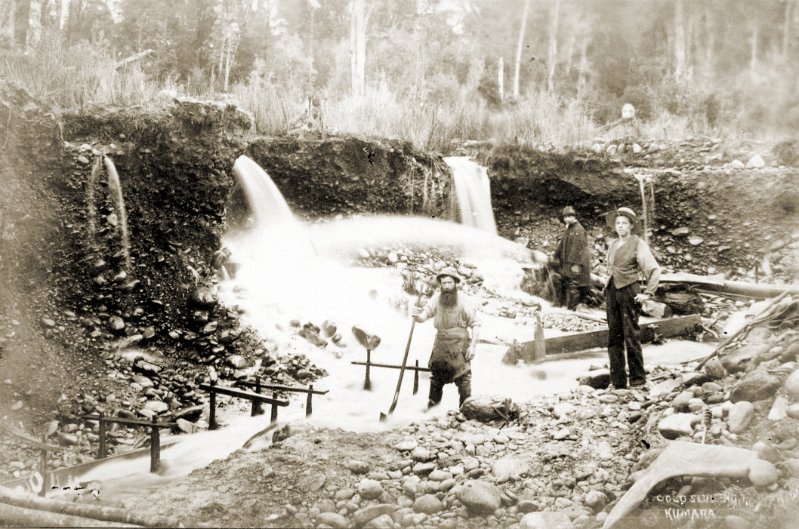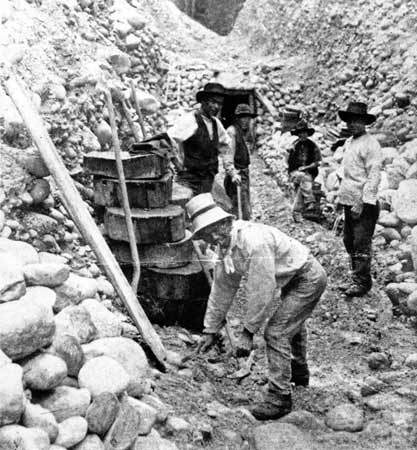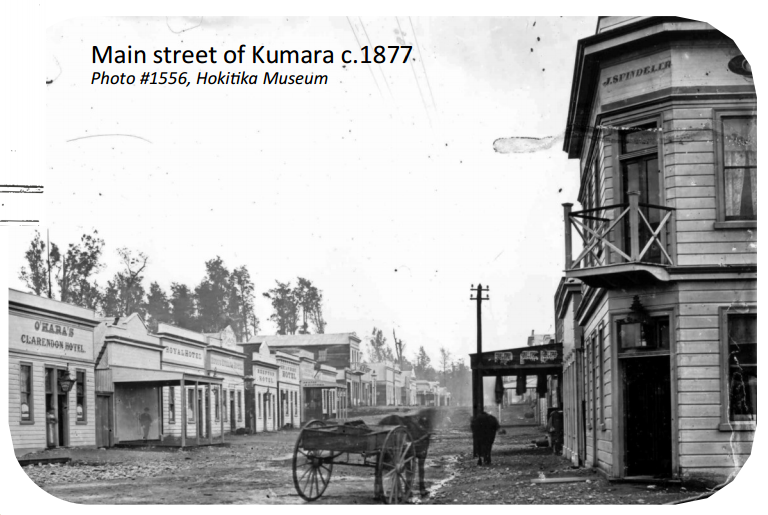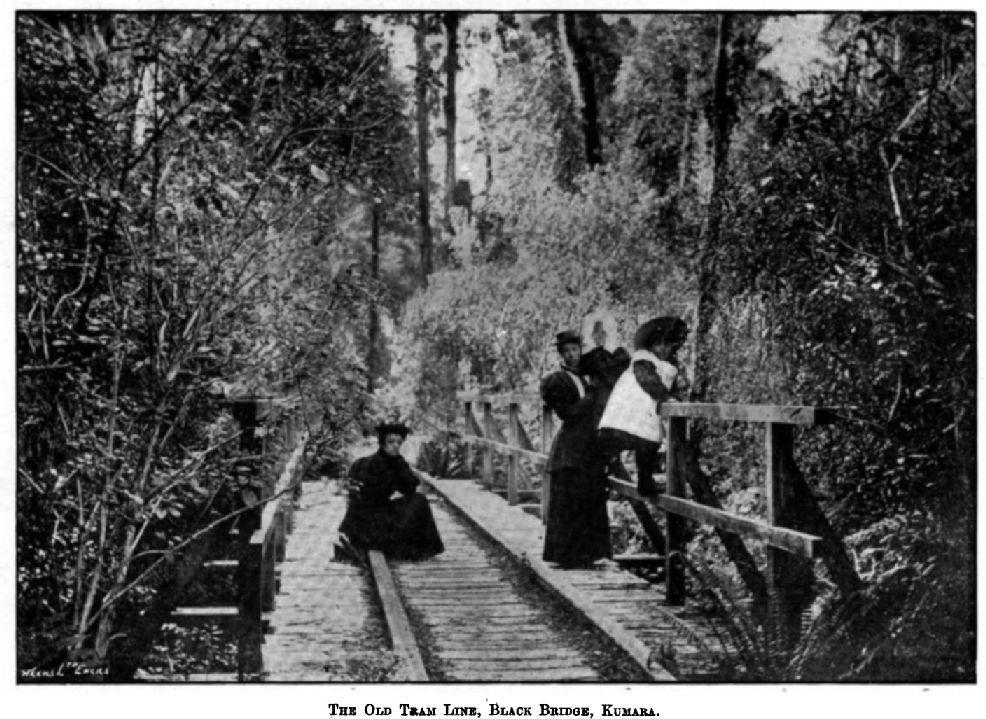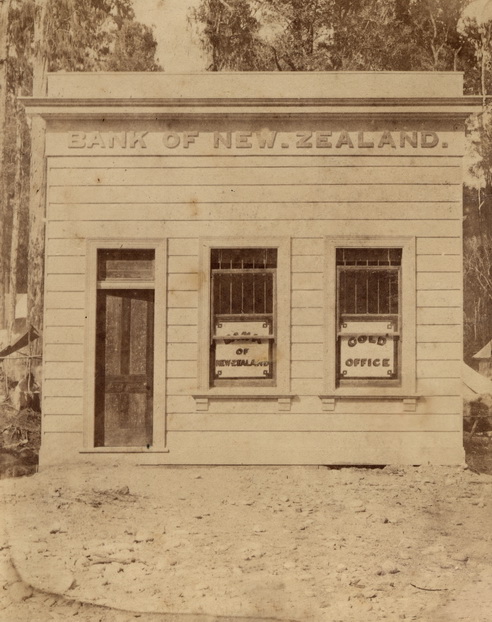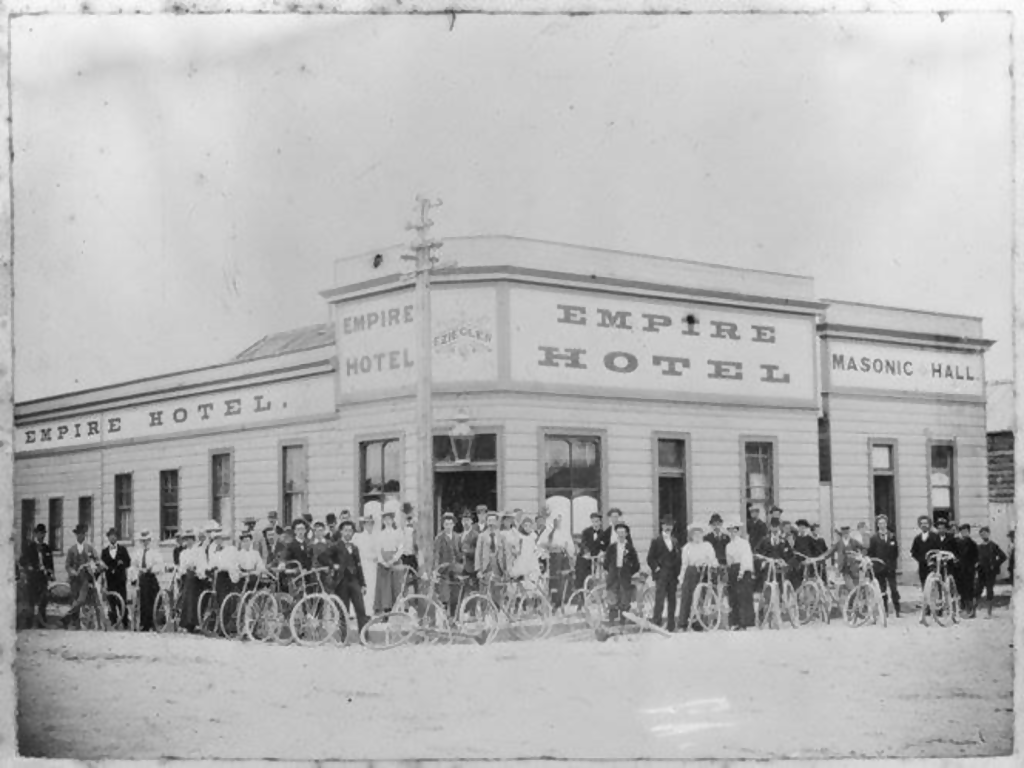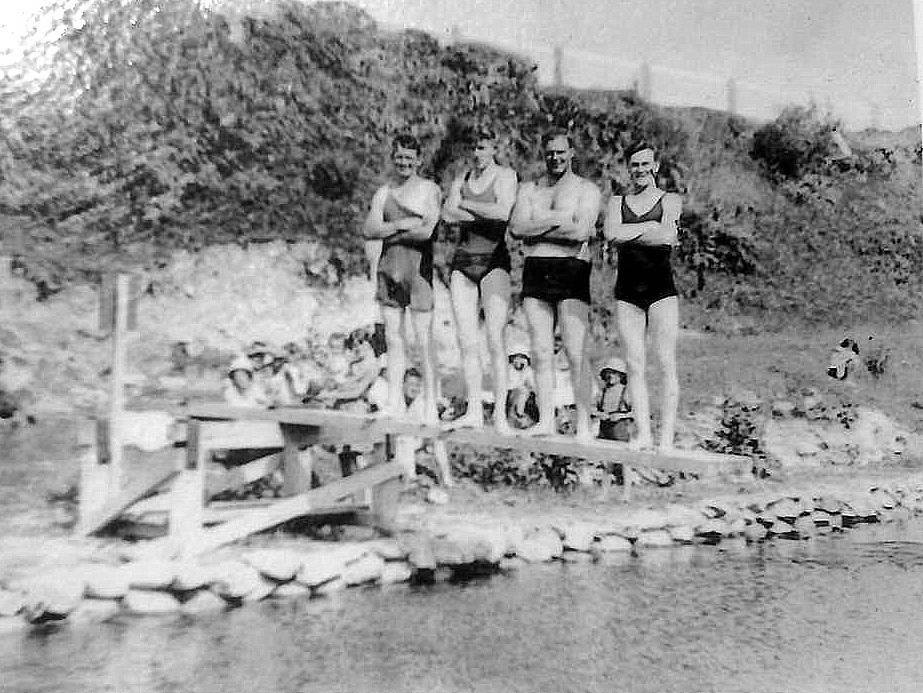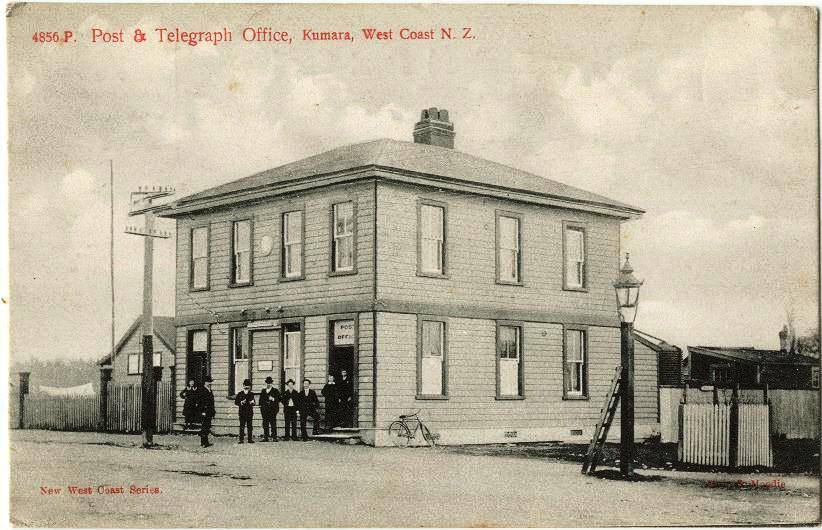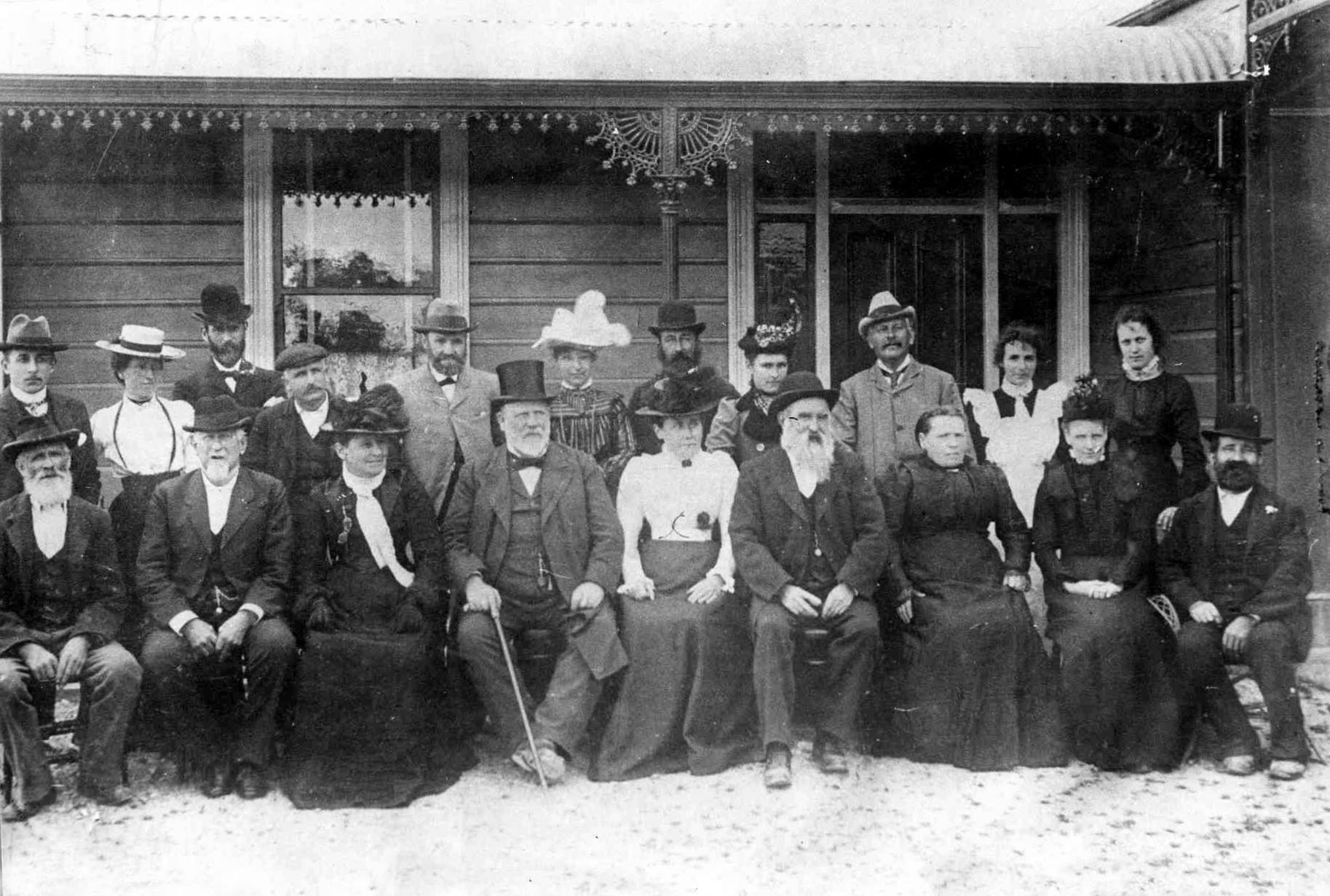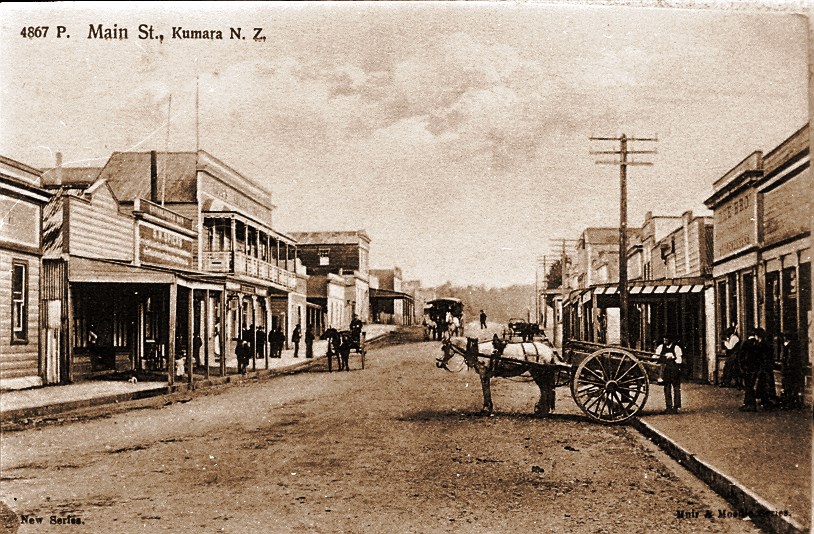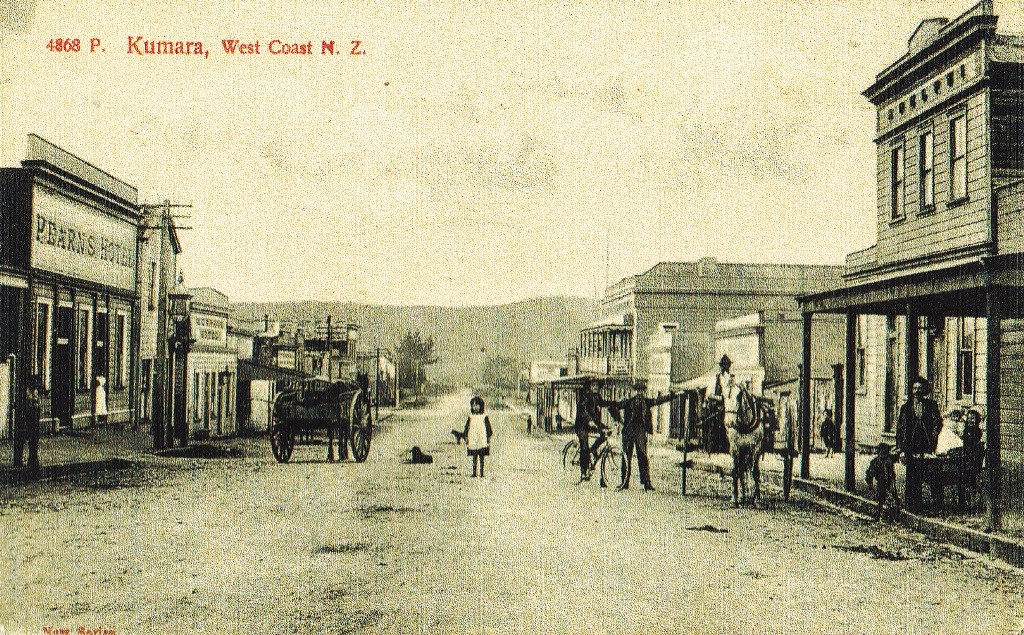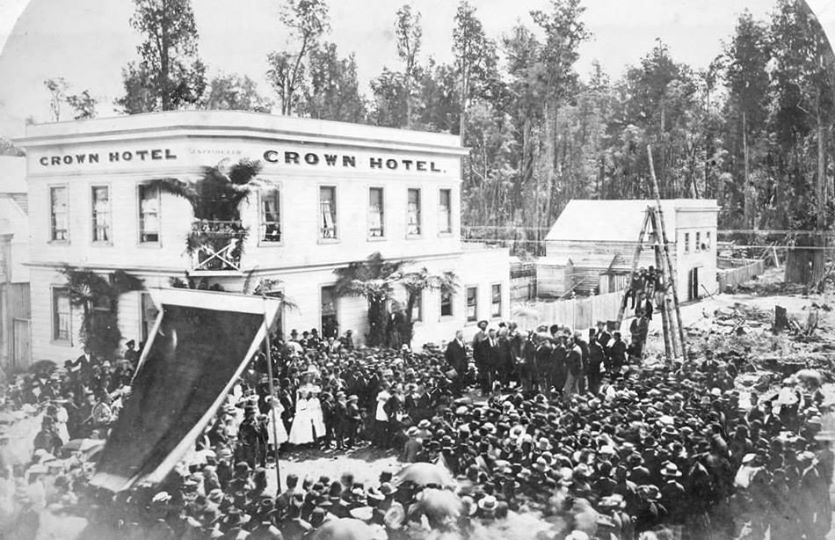Earliest known photograph of Kumara. Taken in December 1876 by H. T. Gorrie. From the H. T. Gorrie Album in the Buttle Family Archives.
Kumara History
The town of Kumara is proud to be the site of one of New Zealand's Last Great Gold Rushes...
Gold was first discovered on the West Coast at Greenstone (see Walks and Attractions) in 1864 and miners in their thousands arrived from all over the world to seek their fortunes. It was over a decade before gold rush fever hit Kumara. The discovery of gold at Kumara in 1876 was among the last in New Zealand (the last was at Rimu, in 1882). History and local folklore suggest that the discovery that lead to the 1876 Kumara rush was made on the terrace opposite the Richard Seddon's house site. Here in the bush in 1874, two down at luck miners Dick Cashman and James Connor decided to set up an illicit whiskey still. While clearing the site for the still they discovered coarse nuggety gold in the sandy gravel. They managed to keep their find a secret until 1876 when they were finally exposed and once word got out the rush was on!
An early map of Kumara and surrounding gold operations.
In a very short period the bush was cleared and a busy town sprang to life. It featured 41 licensed hotels, a hospital, courthouse, police station and its own newspaper, The Kumara Times. Banks, Churches. Bootmakers, bakers and a Catholic and a Protestant school soon appeared. With the eventual opening of Arthurs Pass, Cobb and Co. Coaches would deliver the Royal Mail as well as passengers. There was a Mayor and Councillors, a Manse and a Convent as well as two live theatres bringing in performers from all over the globe. Thomas Bracken who wrote the New Zealand National Anthem was a regular performer as was Richard John Seddon. 'King Dick' represented Westland as member of Parliament for 28 years, 13 of these as Premier. He arrived in NZ in 1866 and settled in the Goldsborough area for near a decade, then moving family and business to Kumara at the beginning of the gold rush there. He was to live in Kumara for the next 20 years, 2 of those as Premier of New Zealand, before moving to Wellington. He resided in Parliament for 13 years until his death.
Chinese Miners added another dimension to this cosmopolitan scene. Many lived in boarding houses at the northern end of what is now called Greenstone Road.
Just a few kilometres east of Kumara (towards Christchurch) is Dillmanstown. The Dillmanstown Goldfield was named after an early prospector, John Dillmans. An impressive series of water-races, carrying water to the sluicing claims was a striking feature of the area at the height of the goldrush. At one time, Dillmanstown had six hotels, four butchers, a saw-mill, baker, 3 boot-makers, several large stores, many small shops and a school.
As the gold lessened many residents moved on. As this was the last of the rush period, many miners decided to stay. Today many of the old families in Kumara can trace their ancestry back to these colourful times. Kumara later became a home for Saw milling and then the Kaniere Gold Dredge. Many associated businesses grew around these industries and once more kept the village alive. When both of these enterprises closed down, once again the town saw businesses shutting down until all that was left was the dairy and photographer along with one school and two Churches.
Dillmanstown 1870s

